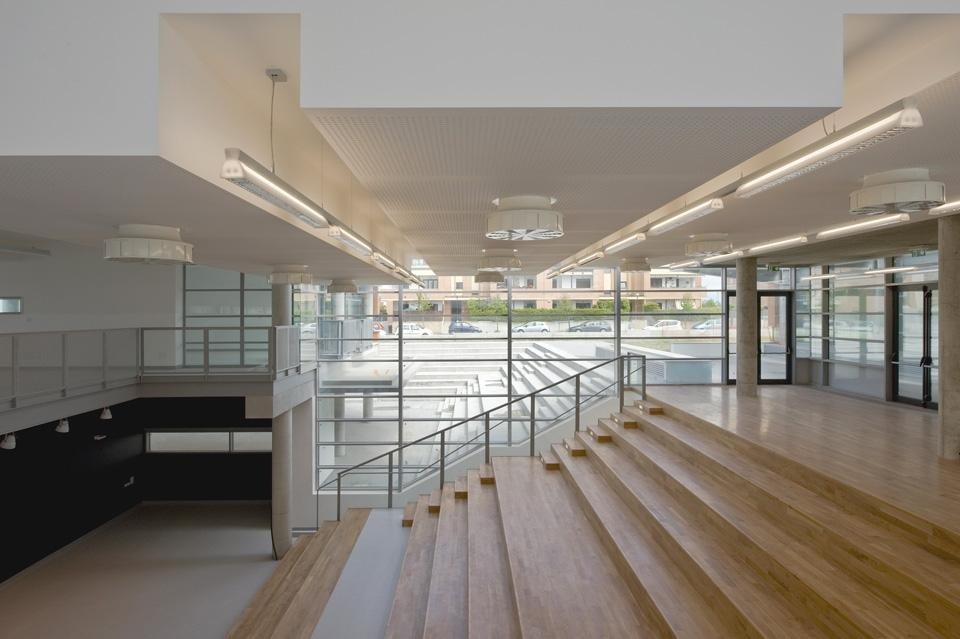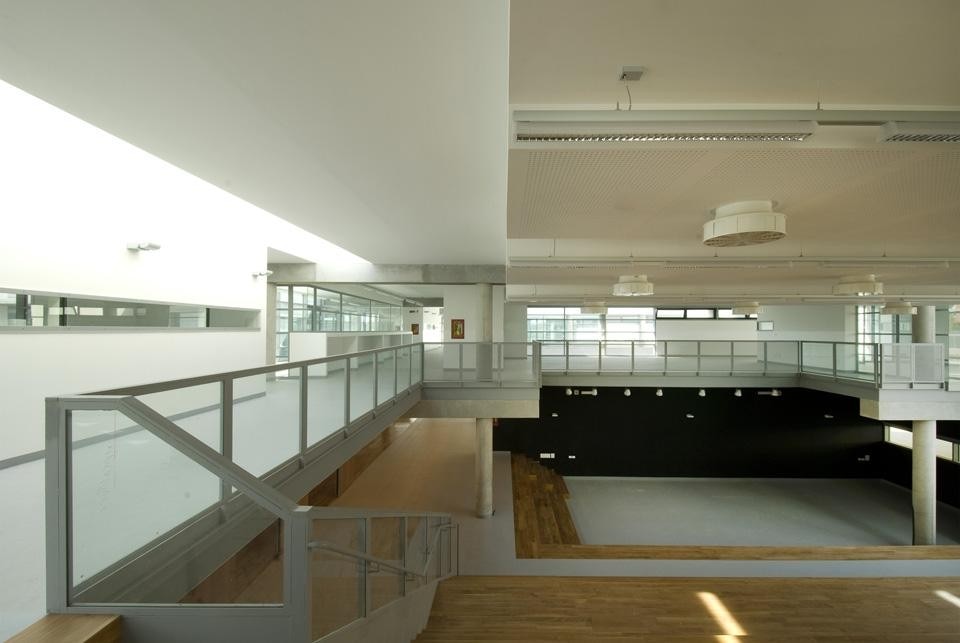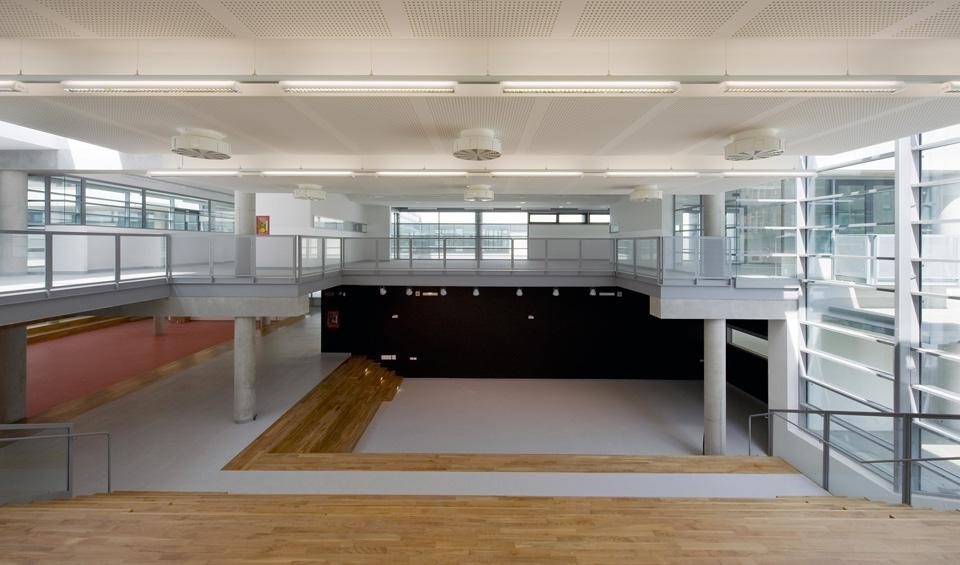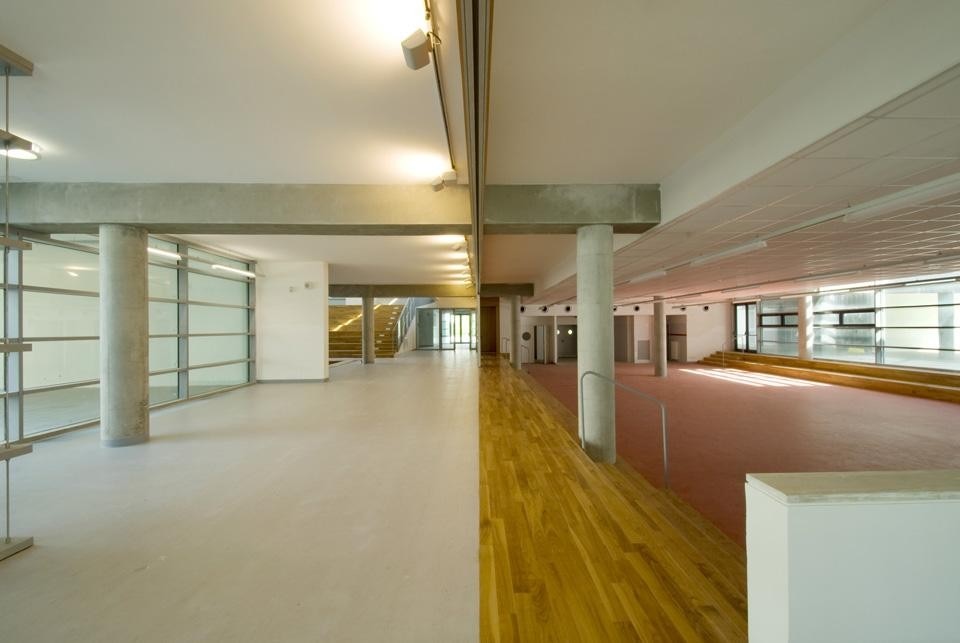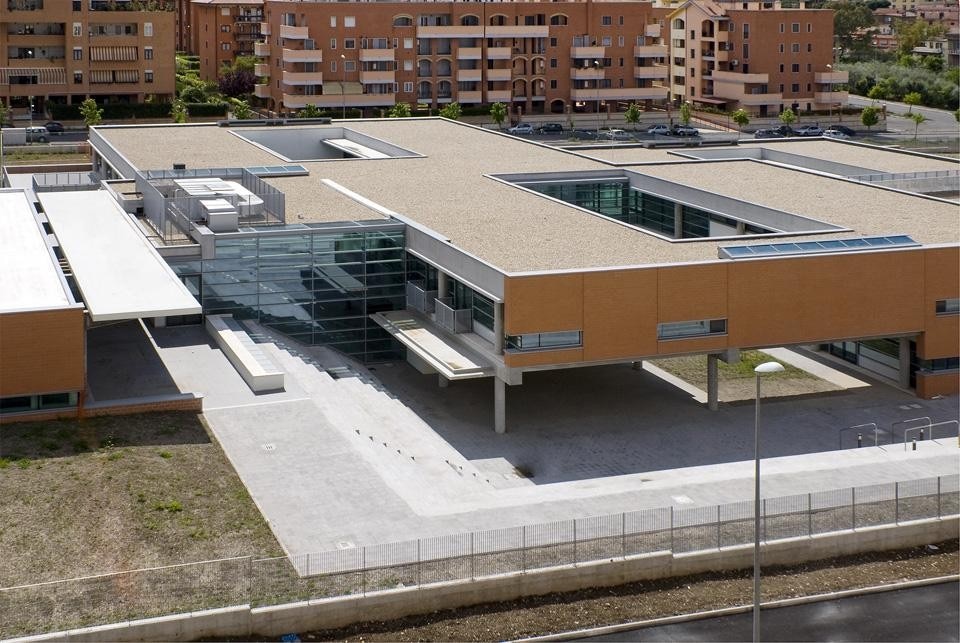In Hertzberger's first work in Italy — a school recently built in the Roman district of Romanina with Marco Scarpinato – AutonomeForme —, this criteria can be seen in the diversification of spaces laid out inside and outside the building. The ten primary school and six secondary school classrooms are set along a single axis that, like a street, is configured as a series of communal spaces, social areas for users of the school. Along this "public" axis lies the canteen, the school theatre, the outdoor courtyards and access to the gymnasium. The street becomes a place for gathering, in the different ways adopted over time through use. The canteen area, for example, can be closed with mobile partitions to satisfy Italian health and hygiene regulations but remains a multi-purpose space for various activities when the walls are open. Its section, set lower down from the circulation areas, means that one can sit along the two long sides, characterised by timber-clad steps. The central open space houses public events, while offering an ideal place for breaks between lessons, or for group lessons with several classes.
The theatre was not part of the original brief, but Hertzberger put it forward as part of an idea to expand the stairs connecting the two levels of the school. Here, the term stairs is in fact wrong, as the connection between the two levels is achieved via large steps which can be used for performances, group lessons, end-of-year presentations, meetings with parents or simply for breaks between lessons or during recreation. The courtyards also contribute to the articulation of the main axis, conceived as a way of extending teaching space outdoors and providing places for relaxing and socialising in different ways.
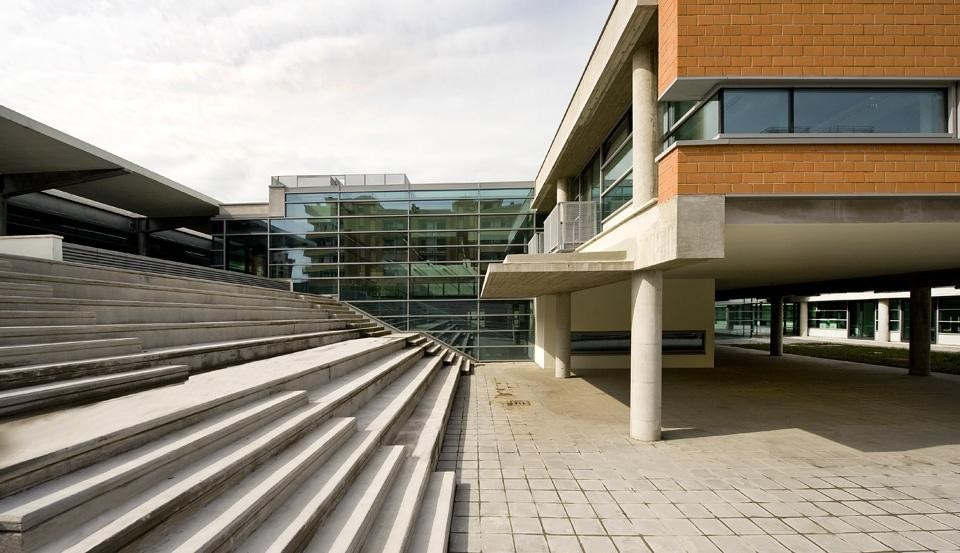
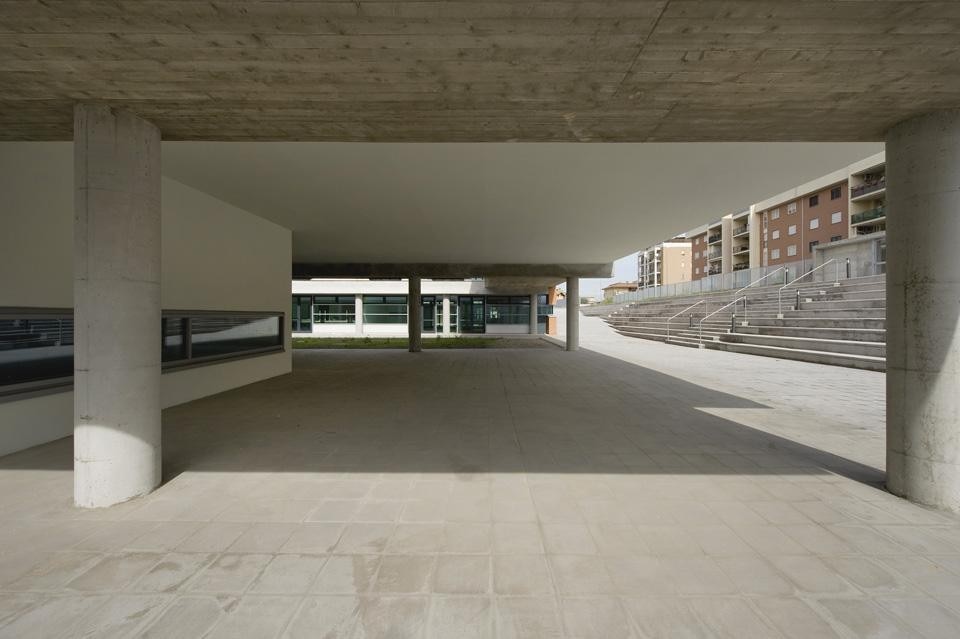
Giving the users the freedom to decide how every part of the building is used has been — and still is — one of the fundamental values of the Dutch architect's work. Contrary to functional determinism, this process enables users to take over spaces, altering their role from "users" to "inhabitants"
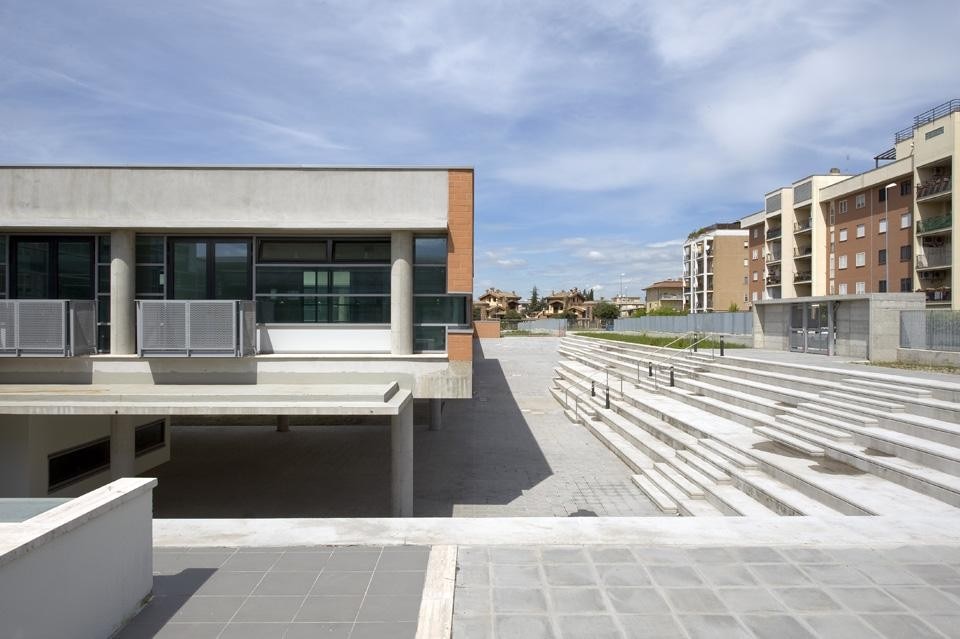
Elementary School Romanina, Rome (2005 – 2012)
Architect: Herman Hertzberger, Marco Scarpinato – AutonomeForme
Client: Comune di Roma
Total area: 4,800 mq
